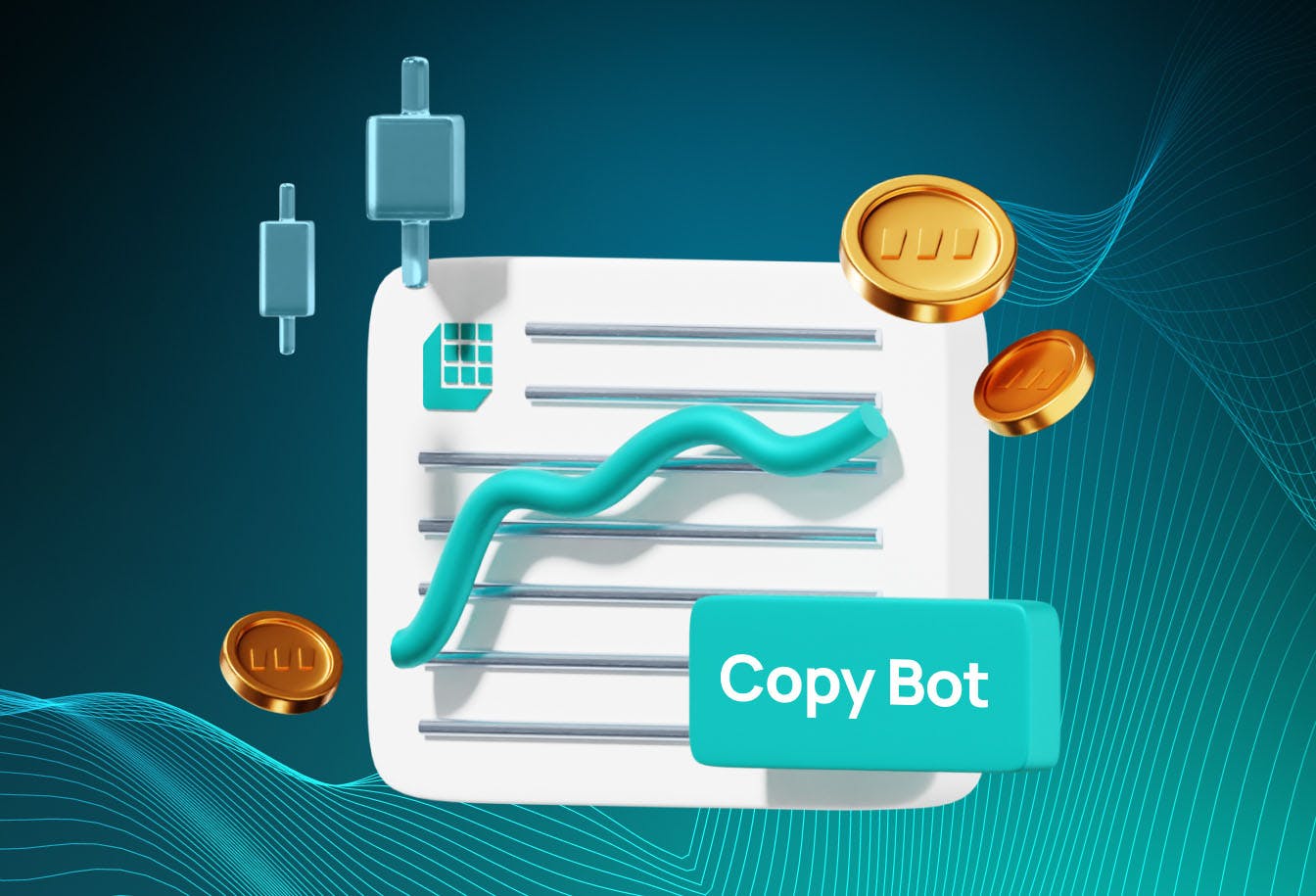
- All
- Tools
- Analytics
- Technical Analysis
- Trading
- Blockchain
- DeFi
- Guides
- Company News
- Educational
- Opinion
- Price Predictions
- Market News
- News
- Trading cases
- Practical guides
- Exchanges
- Trading signals
- Cryptocurrency
- Crypto bots
- Other
Become a crypto master
Learn everything about crypto,
trading and bots

Polygon: the Internet of Blockchains
A recent update to the Ethereum network brought a new Ethereum Improvement Proposal — EIP-1559. Among other things, 1559 changed the mechanism responsible for including transactions into blocks, and allowed for the balancing of gas prices in the network depending on market conditions. Still, because the scaling problem is so critical for the Ethereum blockchain, other solutions are being developed in addition to this recent upgrade.
In today’s article we will talk about one of those solutions: Polygon, a Layer 2 solution for creating and integrating Ethereum-compatible blockchains.
Start Trading on 3Commas Today
Get full access to all 3Commas trading tools with free trial period

Layer 2 Solutions
The number of dApps built on top of Ethereum is rapidly growing. But its popularity has led, at times, to slow transaction processing speed and high network fees–significant obstacles to the mass adoption.
That’s where Layer 2 protocols come into play.
A Layer 2 (L2) protocol is a general term for services built on top of existing blockchains. For example, there are a number of L2 solutions designed to solve the scaling problem on Ethereum. When the network is overloaded the speed of transactions decreases, making it difficult for users to interact with decentralized applications. But L2s can combine with the base layer blockchain, offering higher throughput with near-instantaneous transactions by processing or confirming transactions at above the main blockchain, in the system. For example, the L2 Optimistic Rollups solution allows you to execute transactions on a sidechain and then batch and broadcast them to the underlying network. The essence of the method is that all default transactions are considered valid until proven otherwise.
Polygon’s Internet of Blockchains
Polygon is Ethereum’s most popular L2. More than 350 decentralized applications and over 660,000 addresses have already been created on this network, and it has already facilitated over 340 million transactions .
Polygon runs a ‘side chain’ atop the Ethereum base layer, processing transactions in parallel to the main network. In the future, Polygon’s developers promise to create a bona fide “internet of blockchains” or “network of networks”— the only scaling solution Ethereum’s ecosystem will ever need.
A lot of the hype is backed up by Polygon’s security. The network is ensured by a hundred validators, one of them being the largest cryptocurrency exchange Binance. And nearly 2 billion coins are currently locked in Polygon smart contracts. In the future, the protocol will support both secure networks, such as Rollups, and autonomous networks, such as sidechains. Secure networks will provide a higher level of security, by interacting with the main network, which will be suitable for projects aimed at privacy or requiring a higher level of security. Standalone sidechains will be independent and more flexible than their counterparts, but less secure. Algorithms that sacrifice decentralization for scalability are not ideal, as they increase the attack surface from powerful adversaries.
The Polygon SDK–a blockchain startup solution utilizing different scaling approaches — is currently under development: Plasma, Validium, Optimistic Rollups, zkRollups, and others.
Tools for using the protocol
In order to interact with the Polygon network, you can use Ethereum’s Metamask walletAll you need to do is select “Custom RPC” in the drop-down menu, and then enter your connection details:
Network Name: Polygon (Matic) Mainnet
New RPC URL: https://rpc-mainnet.matic.network
Chain ID: 137
Symbol: MATIC
Block Explorer URL: https://explorer.matic.network/
Then there are bridges, which enable interoperability between different networks. To bring assets into the Polygon network, you can use the following bridges:
- Polygon’s official PoS bridge
- Connecxt’s xPollinate bridge to transfer assets from Fantom and the Binance Smart Chain network
- RenBridge direct bridge for transferring assets such as renBTC, renBCH, renLUNA, renFIL, and others.
- Zapper Bridge for one-way transfers into Polygon.
To exchange tokens inside Polygon, you can use the decentralized exchange Quickswap — a fork of Uniswap V2. The exchange is powered by automated market makers (AMMs) and liquidity pools (LPs), and over 100 coins are available for exchange on the platform. Users can also provide liquidity to LPs, or lending protocols, in order to farm yields.
Prospects
Today, Polygon is integrated with some of the largest blockchain protocols in the decentralized finance niche. For example, one of the first projects to announce the use of Polygon was Aave, which leverages the L2 to allow for quick and easy lending and borrowing.
Decentralized exchange SushiSwap’s integration with Polygon allows users to provide liquidity, make deposits, and exchange tokens with significant savings on fees compared to L1.
The mStable protocol provides access to its pegged asset infrastructure using Polygon, allowing users to exchange DAI, USDT, mUSDT, and USDC stablecoins with zero fees.
The largest NFT marketplace, OpenSea, uses L2 for some of its transactions. In order to identify which NFTs can be purchased using Polygon, a corresponding logo has been added to the relevant offerings.
Plenty more projects use the Polygon network–including Balancer, Kyber Network, Curve, Dfyn, Aavegotchi, and more. Mass adoption is still far off, but growth is strong: according to TheBlock, Polygon’s TVL (the volume of assets locked in smart contracts) has grown more than 20-fold since early spring 2021 to about $6 billion.
With the growing popularity of DeFi and NFTs, the need for layer two solutions has increased. Polygon reduces fees, improves interoperability between ecosystems, and offers developers the ability to create their own networks that are compatible with Polygon and Ethereum. And given the recent news about the creation of a DAO to manage decentralized finance and the ecosystem, it could be argued that this is one of the fastest-growing Ethereum blockchain scaling solutions.
Polygon Network: Architecting Scalable Solutions in 2023
In 2023, the Polygon Network stands at the frontier of blockchain technology, continuing to offer scalable and efficient solutions in the ever-evolving decentralized ecosystem. Polygon, originally known as Matic Network, has carved a distinctive niche, providing a framework for building and connecting Ethereum-compatible blockchain networks.
Layer 2 Scaling Solution
Polygon operates as a Layer 2 scaling solution, addressing the inherent limitations of Ethereum in terms of throughput and transaction costs. By enhancing scalability and fostering seamless interoperability between different blockchains, Polygon is essential in actualizing the vast potentials of decentralized applications (DApps) and ensuring the fluidity of digital assets across various platforms.
Multi-Chain Ecosystem
This year, Polygon’s multi-chain ecosystem is a culmination of innovation and versatility, offering a robust platform for the development and execution of diverse decentralized applications. It enables developers to build bespoke blockchains with customizable features, optimizing the user experience and facilitating broader adoption of blockchain technology.
DeFi and NFT Innovations
In the realm of Decentralized Finance (DeFi) and Non-Fungible Tokens (NFTs), Polygon is a harbinger of transformation. It hosts myriad projects, enabling fast, secure, and cost-effective transactions. The network’s ability to reduce complexities and frictions in user interactions has made it a preferred choice for developers and users exploring DeFi innovations and NFT platforms.
Community and Development
Polygon's commitment to community engagement and open-source development is manifesting through continuous enhancements and collaborative initiatives. The ever-growing developer community around Polygon is pivotal in driving the network’s evolution, ensuring it remains responsive to the changing needs and aspirations of the decentralized ecosystem.
Conclusion
In 2023, Polygon Network is catalyzing change and propelling the blockchain space towards new horizons, by delivering scalable, interoperable, and user-friendly solutions. Its significant contributions to the DeFi and NFT spaces are steering the course of decentralized applications and enabling the realization of a cohesive and versatile digital future. The ongoing developments and community-driven approach within Polygon are reflective of its enduring pursuit to elevate the decentralized experience and reshape the blockchain landscape.

A proven leader, successful at establishing operational excellence and building high-performance teams with a sharp focus on value creation and customer success.





